
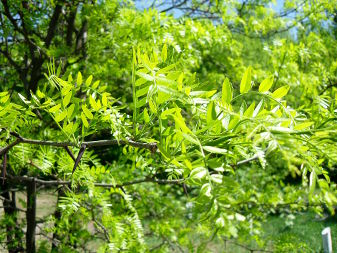
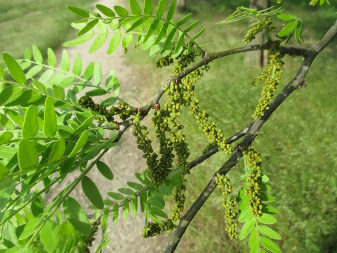
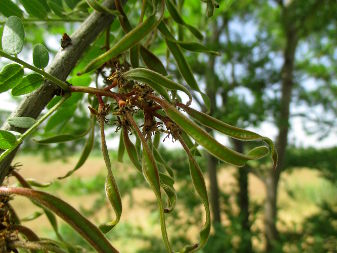
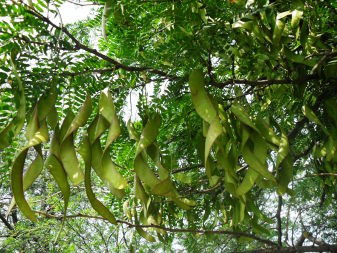
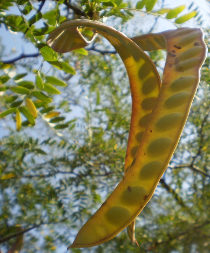

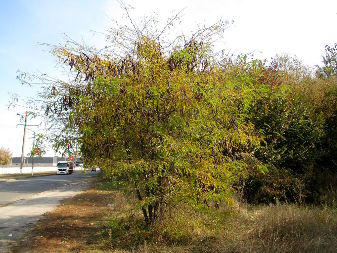
Honey Locust (Gleditsia triacanthos), fam. Fabaceae.
A common tree in southern Ukraine, but in Kyiv it occurs rarely. Strictly speaking, there are no honey locust trees in DVRZ suburb, the closest are probably around the Lisova metro station (see the map). Moreover, there are fruiting trees in the Fomin Botanical Garden and in Expocenter of Ukraine. It is usually a tall tree ith long and thick thorns, which even stick out of the trunk, branching many times during the years of existence.
The alkaloid triacanthin, a component of the honey locust leaves, is used in medicine. It has spasmolytic action over the organs with smooth muscles, dilates blood vessels, decreases arterial pressure, and stimulates respiration. The young, just sprung leaves are the richest in alkaloids (up to 1% per dry weight). There are cases of people death from poisoning with honey locust. However, the fruit pulp is sweetish and considered edible (apparently, in small quantities only). Anyway, the fruits are the least toxic part of the plant. Ripe and fallen fruits create a specific pleasant sour aroma around the tree in autumn.
Interestingly, the large honey locust seeds are impossible to germinate without an extremely harsh treatment – with boiling water or sulfuric acid. In natural conditions, these seeds are adapted to lie many years, being washed by numerous warm rains (in southern USA), until their shell softens.